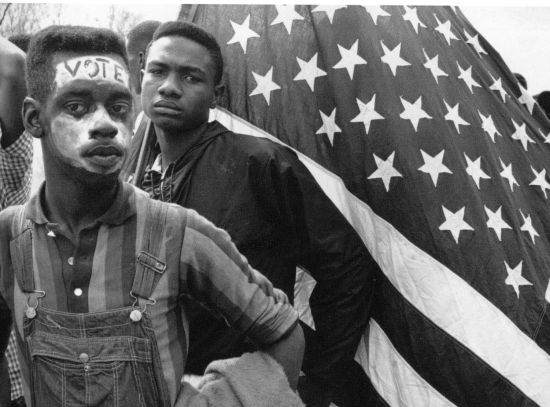“The Supreme Court on Tuesday struck down a key part of the Voting Rights Act of 1965 — the map that determines which states must get federal permission before they change their voting laws.
The ruling, a 5-4 decision by Chief Justice John Roberts, leaves the future of the law deeply uncertain because it will be up to a sharply divided Congress to redraw the map, if it can agree on one at all. Civil rights activists called the decision devastating.
The Voting Rights Act requires nine states with a history of discrimination at the polls, mostly in the South, to get approval from the Justice Department or a special panel of judges before they change their voting laws. The rule also applies to 12 cities and 57 counties elsewhere.
The law was renewed most recently in 2006, but the coverage map still uses election data from 1972 to determine who is covered. Some jurisdictions complained that they were being punished for the sins of many decades ago. An Alabama county brought the case.
“Our country has changed, and while any racial discrimination in voting is too much, Congress must ensure that the legislation it passes to remedy that problem speaks to current conditions,” Roberts wrote for the court.
The act, signed by President Lyndon Johnson, is considered the most important piece of civil rights legislation ever passed. Congress has renewed it four times, and the 2006 reauthorization won a huge majority in the House and passed the Senate 98-0. That renewal extended the law through 2031.
As part of the ruling Tuesday, the court published a chart comparing white and black voter registration in 1965 and in 2004 in the six states originally covered by the law. In Alabama, for example, the white registration rate was 69 percent and the black rate 19 percent in 1965. By 2004, that gap had all but disappeared — 74 percent for whites and 73 percent for blacks. . .”
Photocrdit: Crmvet.org
Founded in 2007, Ladybrille® Magazine is a California based pioneer digital publication demystifying the image of Africans in the west through contemporary African fashion and celebrating the brilliant woman in business and leadership, with an emphasis on the African woman in the diaspora. Our coverage includes stories on capital, access to markets, expertise, hiring and retention, sales, marketing, and promotions.



